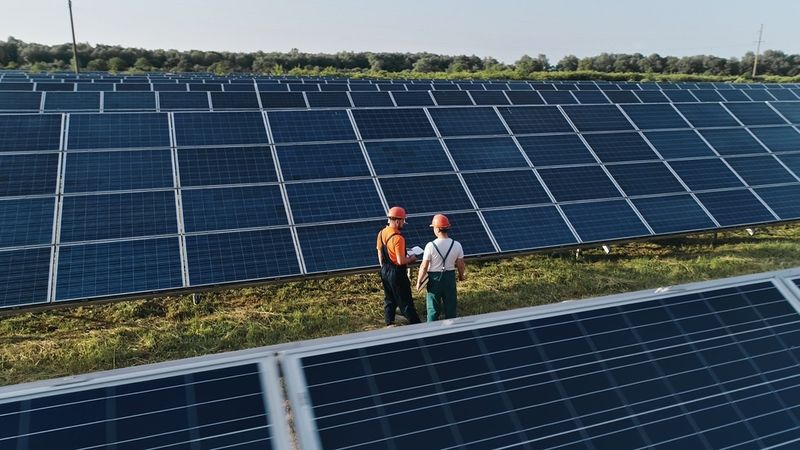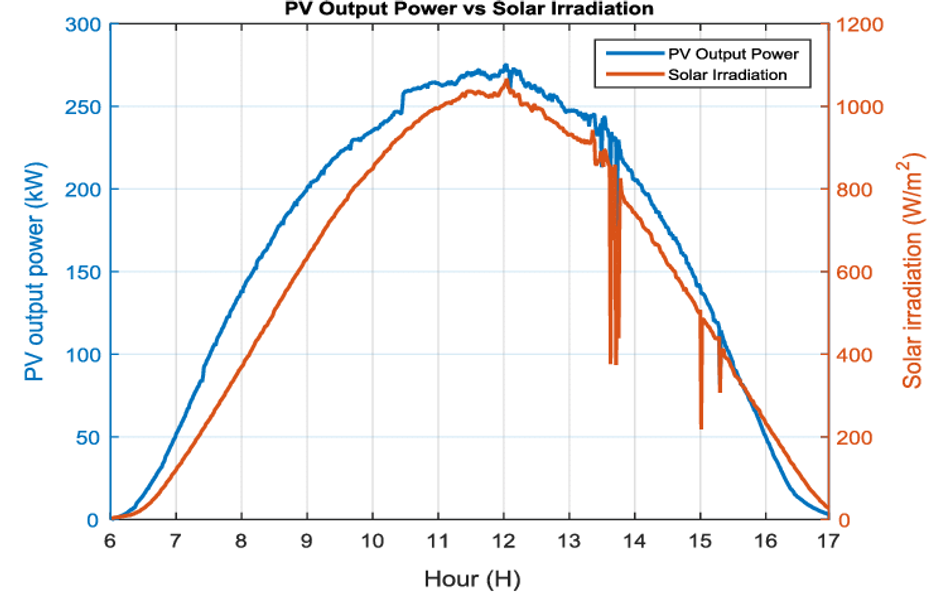Impact of SBCs in Renewable Energy
How single board computers (SBCs) are shaping and helping to manage and mitigate risks in renewable energy
Renewable energy sources, such as solar, wind, and hydroelectric power, play a crucial role in the global energy transition towards a more sustainable and ecological energy scenario. As the demand for renewable energy grows, so does the need for technologies that can improve the management of these resources and the transformation efficiency. One critical aspect of ensuring the viability of renewable energy projects is applying effective risk management solutions to manage generating equipment, avoiding unwanted interruptions, and optimizing system operation. In this context, single board computers (SBCs) are emerging as compact and versatile computing devices that offer technical advantages in the renewable energy sector, supporting the operation and management of renewable energies.
This article explores how SBCs can be used in renewable energy applications, integrating system monitoring and control.
SBCs in Renewable Energy
SBCs, with their compact size and powerful hardware, offer features that make them attractive for renewable energy applications, where real-time data analysis, monitoring, and control are essential. SBCs differ from conventional computing solutions in providing flexibility, such as being installed where space may be limited presenting different connectivity options with sensors and devices. They are compatible with various operating systems, making them highly customizable and adaptable in the applications. Moreover, the SBCs offer low application costs.
System monitoring
Continuous monitoring of the performance of renewable energy installations, such as solar farms or wind turbines, is essential to monitor energy generation and ensure the effective use of the system. For this purpose, SBCs communicating with various sensors can be strategically placed throughout these installations to collect data about multiple parameters, including electricity production, equipment temperatures, and weather conditions. This allows grid operators to assess the system's functioning in real-time and promptly identify potential problems.
Grid balance
The integration of renewable energy into the electric grid introduces fluctuations due to the intermittent nature of these energy sources. SBCs can contribute to grid stability by optimizing the distribution of renewable energy through the data collected and running algorithms for this purpose. These devices can analyze energy supply and demand in real-time, allowing automatic adjustments to energy production from renewable sources or the activation of energy storage systems. The usage of dynamic grid management ensures a reliable energy supply, balance generation and consumption in real-time.
Predictive maintenance
Conventional systems typically use periodic maintenance programs, which may sometimes be less efficient and potentially costly. In contrast, when integrated with SBCs, equipment can undergo continuous monitoring and have its data analyzed for any potential anomalies. Using machine learning algorithms and artificial intelligence, SBCs can accurately predict when maintenance is required. This proactive approach helps reduce downtime, significantly cut maintenance costs, and extend the operational lifetime of renewable energy assets.
Benefits and Challenges of SBCs in Energy Generation
Due to their flexibility and powerful processing capabilities, SBCs can improve various aspects of renewable energy generation:
Energy reliability: SBCs can provide real-time insights into performance and potential equipment issues, contributing to the overall reliability.
Rapid interventions: Through data analysis and instant alerts, SBCs enable rapid responses to critical events or damage, minimizing energy loss and the impact on profits. For example, overheating of equipment or anomalies in the operation of photovoltaic or wind power generation.
Cost-effective: The predictive maintenance and optimized network balancing that can be done using SBCs reduce operating and maintenance costs. Furthermore, SBCs have compact sizes and low power consumption.
However, there are some challenges in implementing it in renewable energy resources:
Initial investment: Implementing SBC-based systems can require significant initial investments in software and integration with existing renewable energy infrastructure.
Technical expertise: Integrating sensors, data analysis software, and control systems is complex and can present technical challenges, requiring expertise in renewable energy and computing.
Cybersecurity: As renewable energy systems become more connected, they are susceptible to cyber-attacks, and ensuring the security of SBC-based systems is vital.
Case Study: SBCs for Photovoltaic Generation
SBCs can be utilized in photovoltaic systems to monitor and control energy production. They can collect data from solar panels and control their operation. An SBC, such as ROCK 5B, can receive and process data to help optimize photovoltaic system efficiency and generation. ROCK 5B, developed by OKdo in collaboration with Radxa, is a state-of-the-art device powered by the Rockchip RK3588 SoC, Arm DynamIQ Quad Cortex-A76 @ 2.2/2.4 GHz.
It features a safe shutdown on/off button and is compatible with various operating systems, including Linux and Android, for enhanced application flexibility. The ROCK 5B has extensive storage capacity, with both 8 and 16 GB of RAM options as well as a high-speed eMMC socket for eMMC modules - ideal for storing operating systems and data. Additionally, it has high compatibility with SBC accessories via the 40-pin GPIO expansion connector.
Photovoltaic systems use current and voltage sensors to monitor energy generation. Some of the popular sensors available in the market include the ACS712 for measuring electric current and the INA219 for measuring the voltage of the panel array. Real-time monitoring of photovoltaic performance is possible with these sensors, which provide valuable information for control and preventive maintenance. Temperature sensors such as PT100 and solar radiation sensors like LI-200R can be used to monitor the operating conditions of solar panels and optimize system efficiency. For example, photovoltaic generation is directly related to the solar irradiation incident on the solar panels, making irradiation an excellent metric for monitoring energy generation. The relationship between the two on a clear day is illustrated in the figure below.
Additionally, a web server like Apache can remotely monitor the solar energy system. The data collected and processed by the SBC can be easily accessible to interested parties, such as solar power plant operators and owners.
Other applications
Wind turbine operators can utilize SBCs to monitor vibrations, temperature, and energy production continuously. With this information, the maintenance algorithms can provide valuable insights for predictive maintenance and reduce downtime.
Another potential application of SBCs would be in smart grids, which can be employed to manage energy storage and distributed energy resources. By optimizing energy distribution and storage, this technology would enable demand response and efficient energy supply.
Future Perspectives on Using SBCs in Renewable Energy Systems
As technology advances, the role of SBCs in the renewable energy sector is set for considerable expansion. With the Internet of Things (IoT) and Artificial Intelligence (AI) becoming increasingly prevalent, SBCs can serve as a promising element in increasing the efficiency and safety of renewable energy systems. The technical characteristics of SBCs position them as a powerful device for ensuring the viability and sustainability of renewable energy solutions.
Conclusion
SBCs contribute to harnessing the potential of renewable energy by enabling real-time monitoring, grid balancing, and predictive maintenance. These devices offer flexibility and economy, benefiting reliability, rapid response to problems, and cost savings. Although there are challenges, SBCs show great potential for the future as technology develops, supporting more efficient and sustainable renewable energy systems.
References
Philip Hirschhorn and Tom Brijs, 2021. “Rising to the Challenges of Integrating Solar and Wind at Scale”
IRENA, 2015. “From Baseload to Peak: renewables provide a reliable solution”
Kabeyi Moses Jeremiah Barasa and Olanrewaju Oludolapo Akanni, 2022. “Sustainable Energy Transition for Renewable and Low Carbon Grid Electricity Generation and Supply”
Johns Hopkins University, 2021. “The Future of Sustainable Energy”
Hadi Ganjineh, 2021. “How Artificial Intelligence And Machine Learning Are Transforming The Future Of Renewable Energy”
Nicolas Sarmiento Sierra, 2023. “Enhancing Electrical Grid Management with emerging SBC technology”
R H P Putra and D Wahyudin and T Sucita, 2018. “Designing Energy and Power Monitoring System on Solar Power Plant Using Raspberry Pi”
Hamzah Eteruddin and David Setiawan and Atmam, 2020. “Web Based Raspberry Monitoring System Solar Energy Power Plant”
Muhammad Qamar Raza, Mithulananthan Nadarajah and Chandima Ekanayake, 2016. “On recent advances in PV output power forecast”



